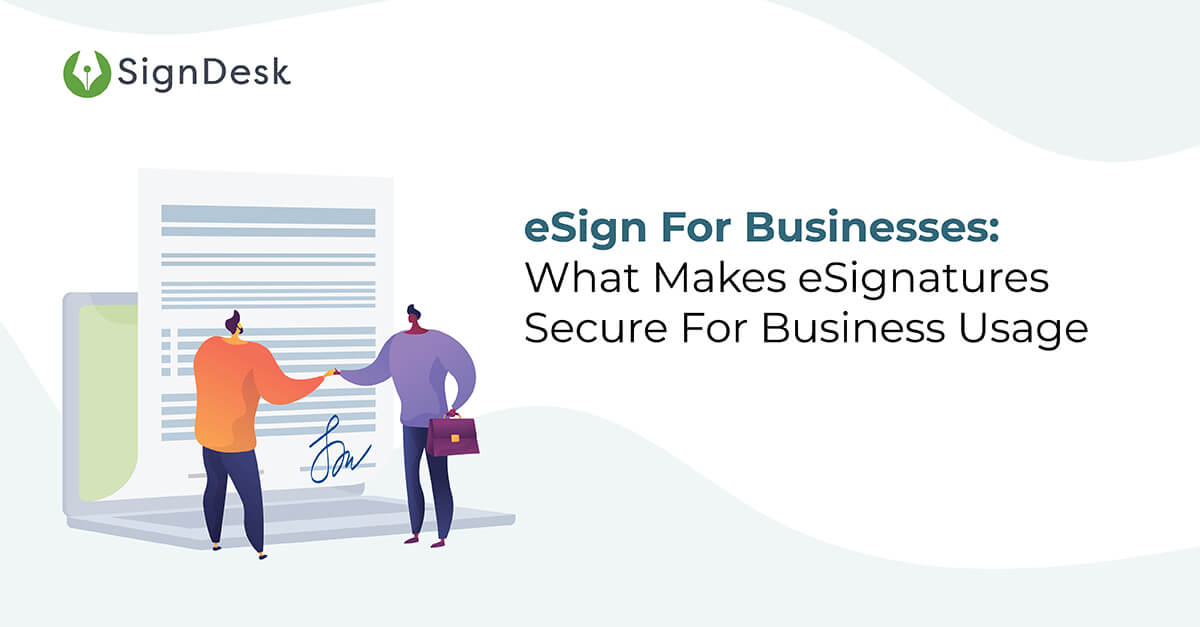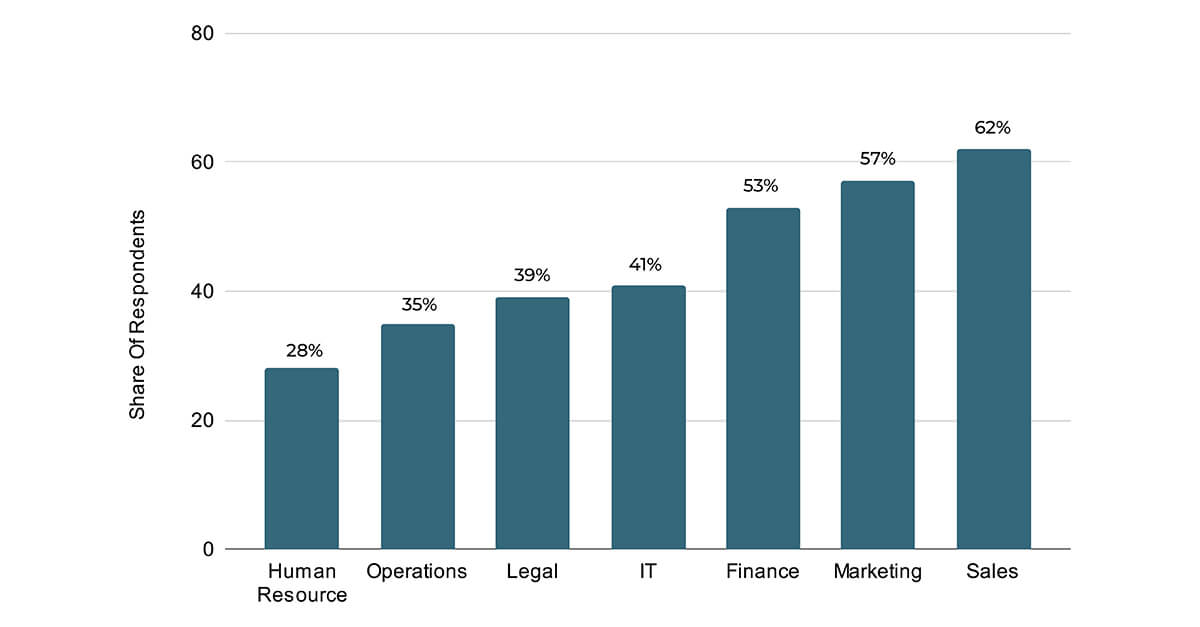Secure eSignature: An Overview

In the era of software innovation, productivity has soared, offering unparalleled levels of ease and efficiency. However, this progress has led to heightened concerns about data security breaches and cyber threats. Among these threats, the manipulation of signatures stands out as one of the oldest and simplest forms of deception, posing significant risks to legal and business entities alike. Enter Secure eSignature – the solution to modern security challenges.
eSignature, also referred to as e-sign, is a cryptographic method of signing documents electronically. This technology ensures a seamless and secure transaction process by providing a reliable form of identification for signatories. By integrating Secure eSignature into your workflows, you can mitigate the risks associated with forged signatures and safeguard your sensitive information effectively.
According to reports, the global digital signature market is expected to increase at a Compound Annual Growth Rate of 33.1 percent from USD 4.0 billion in 2021 to USD 16.8 billion by 2026. The rapid expansion in government and enterprise investments in electronic documents, as well as improvements in end-to-end customer experience and enhanced security with a controlled and smooth workflow, are projected to propel the digital signature market forward.
Enhancing the acceptability of cloud-based security solutions, increasing the number of partnerships and acquisitions, and increasing artificial intelligence collaboration with digital signatures are all prospects in the digital signature industry.
eSignature: A Look At The Data
Data suggests that as per a 2019 poll, about 44% of legal departments throughout the world used secure eSignature technology solutions in 2018. Approximately 93 percent of representatives said legal operations are handled in-house in the same poll.
In 2020, India had a 141 percent surge in ID fraud, resulting in roughly Rs 1.85 trillion in losses for Indian banks. Forged signatures are one of the most common forms of ID fraud, and they highlight the lack of security that exists in physical signatures.
This is why digital signatures are quickly becoming the industry standard for document signing and evidence generation. Digital signatures are the safest technique to verify a signer’s identity and provide strong proof that the document was signed by the signer and no one else.
According to respondents in a survey done in 2020, 62 percent and 57 percent of sales and marketing departments, respectively, are currently using documentation tools. As of 2020, a growing number of employees will be working from multiple locations, which will necessitate the use of digital documentation technologies to assure business continuity. File sharing and e-signatures are examples of digital document solutions.
Secure eSignature adoption in business verticals
The graph below illustrates eSign adoption rates among various surveyed verticals across businesses:

How eSignatures work & what makes them secure
Hash algorithms or a scheme of algorithms like DSA and RSA that use public and private key encryptions are used to establish a digital signature. The sender signs the message digest (not the data) with the private key, which creates a digital thumbprint that is used to transfer the data.
It’s worth noting that every instrument used to digitally sign a document is numerical in nature. Crypto-algorithms are used in digital signature systems to convert both the signed document and the private key (which is already in character form) into a new set of encrypted characters.
When a signed document is authenticated with the public key, the signer knows who authored it and if it has been changed since it was digitally signed. The original hashed document is returned by the decryption process, which can be compared to the encrypted hash to ascertain the document’s authenticity and digital signature.
Multiple authentication mechanisms are available in e-signature systems to validate a signer’s identity, including:
- Authentication through an email link
- One-time Password in phone
- Signing Password
- Account-based authentication (SSO and non-SSO)
- Identification from the government and supporting documentation
Advantages of Secure eSignature
- Authenticity in a Digital World
The key advantage of electronic signatures is their reliability. To establish that a person is who he says he is, he does not need to print, sign, copy, scan, fax, or mail anything. He/she also doesn’t have to be concerned if the email account is hacked. Electronic signatures keep electronic documents secure by preventing imposters from submitting fake information or tampering with files.
- Internet Commerce Expansion
People can do more business transactions online with the use of digital signatures. Digital signatures have been just as legally binding as ink signatures in the United States since the Federal Electronic Signatures in Global and National Commerce Act was approved in 2000.
- Savings
There is no need for paper, ink, or postage with electronic signatures. Electronic documents are saved by many businesses and organizations, eliminating the demand for storage space. Electronic signature and filing save time because fewer trips to the printer, mailbox, and storage file are required. Signed documents are also easier to disseminate because they can be mailed to several recipients. In industries that rely significantly on records, such as health care and government, these benefits save money and improve efficiency.
- Risks and Security
While there are real advantages to using electronic files and signatures, there are also risks if one or his/her company mishandles them. Financial loss, damage to the corporate image and shareholder value, intellectual property loss, a disruption of business flow, and increased liability are all significant concerns if someone mistakenly deleted or misplaced electronic files, or if they did not encrypt them effectively.
In general, electronic signatures are more secure than handwritten signatures. Someone must have access to both the computer and signing certificate password in order to counterfeit the electronic signature.
Forging an ink signature is made easier by technology or merely skilled hand copying. People are still apprehensive of electronic document fraud since the authenticity of physically witnessing someone’s signature with a pen cannot be replaced.
- Proficiency badges & virtual audit trail
More detailed accreditations of closure can include specific information about each signer on the document. This includes the consumer disclosure indicating that the signer agreed to use electronic signatures, the signature image, key event timestamps, and the signer’s IP address and other identifying information.
Because the level of e-signature security differs by the provider, it’s critical to choose an e-signature service that incorporates strong security and protection into every aspect of its operations.
These safety precautions should include:
- Physical security: safeguards the systems and the buildings in which they are housed.
- Platform security: preserves the data and processes that are kept in the systems.
- Security certifications and processes: assist in ensuring that the provider’s workers and partners adhere to security and privacy best practices.
How To Create A Digital Signature
Following the previous analysis of eSign security, the question now arises regarding how to create one.
Award-winning and fully automated digital signature services are provided by SignDesk, a CCA-certified CA for digital signatures providing an eSign workflow solution that includes the ability to add multiple signers, produce documents online using templates, and track documents as they are sent out for signature.
All that is required to create a digital signature with SignDesk is to log in and submit a document. Then, if necessary, invite signers to sign the paper and enforce a signing order. Within minutes, the signers will receive the document and eSign it online.
Here’s a step by step guide on how to eSign any document using SignDesk’s Aadhaar eSign–
- Upload the document to be signed.
- Invite documents signers via email
- Signers log into SignDesk & proceed to view the document
- Enter Aadhaar card number and the One Time Password (OTP) received on the mobile number registered with Aadhaar.
- The document is eSigned once the OTP has been verified.
- Once all parties have placed their eSignatures on the document, it can be downloaded for safekeeping.
To eSign a document, all a user needs are an Aadhaar Number and an Aadhaar-registered mobile number. With just these, documents can be eSigned instantly from anywhere.
SignDesk – Industry-grade Signature Algorithms
SignDesk is a leading document automation solutions provider, assisting businesses and enterprises across various industries in developing a smooth workflow process. Our award-winning secure esignature solution enables businesses to secure their documents; create strong digital evidence, and maintain a virtual audit trail for all their compliance requirements.
Our eSign solution provides electronic, digital & Aadhaar-based signatures, custom templates to create legally valid documents, multi-party & multi-location signing, virtual audit trail, real-time notifications & reminders, and more.
Are you ready to automate & secure your documents with a robust & secure eSignature solution?